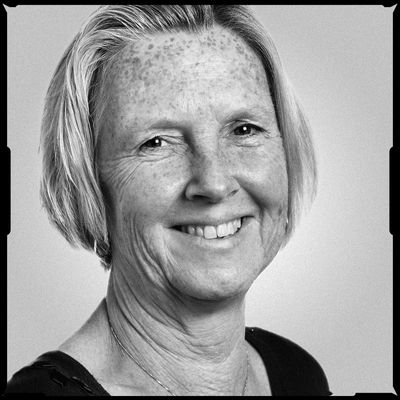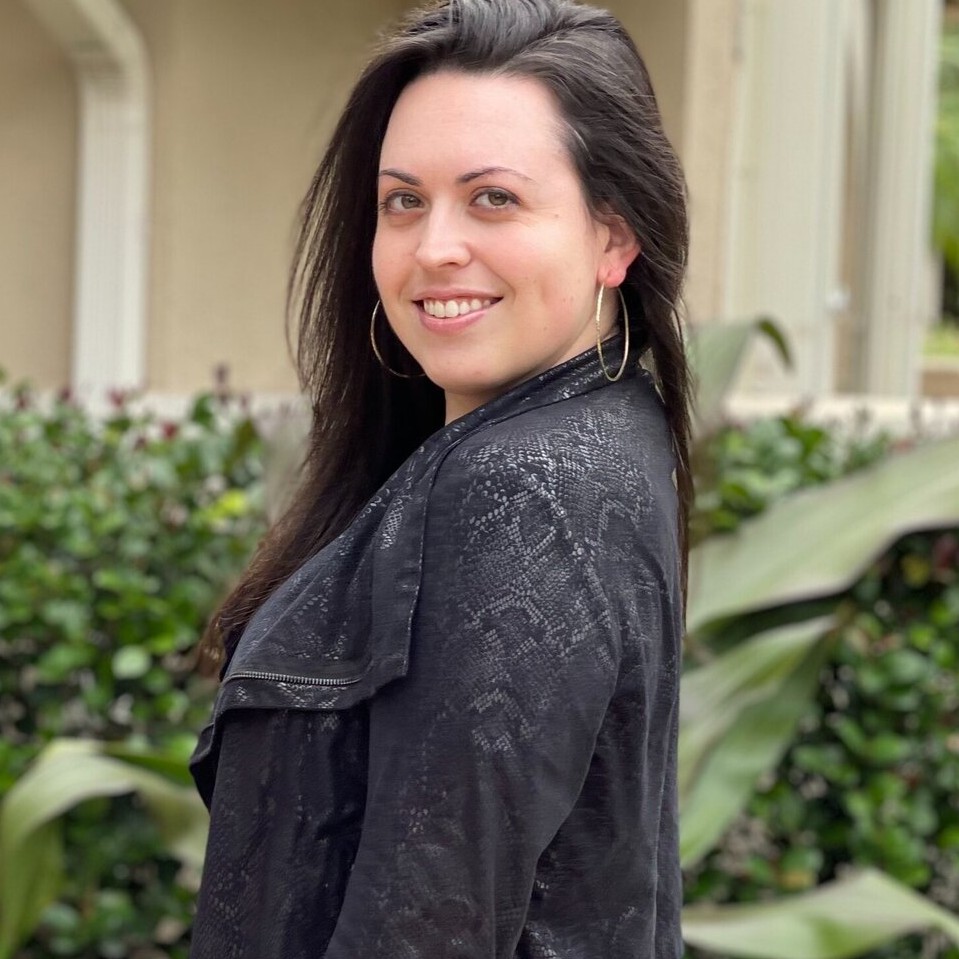Inside the 'USA Today' Newsroom During the 9/11 Attacks
Susan Miller, then the news copy desk chief, watched smoke billow past her office windows. She decided to keep working anyway.



'Click here to read the complete "Reporting in Real Time" series'
Twenty years ago, September 11, 2001 became—and will forever be—one of the biggest and most important news days in American history. As we remember the events that unfolded and honor the nearly 3,000 lives lost, Marie Claire asked five women journalists to reflect on covering the 9/11 attacks in real time and the lessons that can be learned today. Here, Susan Miller, who ran the news copy desk (the department responsible for editing stories for accuracy, style, and grammar) at USA Today, recounts what it was like working inside the newspaper's offices in Arlington, Virginia, just two-and-a-half miles from the Pentagon crash. Find out what transpired in the newsroom, below, then read the rest of the journalists' stories here.
The big stories of that summer and early fall were the disappearance of Chandra Levy and the shark attacks. Every day, I would wake up and get up to speed on what was happening on cable news, usually CNN. I was particularly paying attention to the Chandra Levy case, but before I had a chance to do that [on the morning of September 11] a friend called and said, "Turn on your TV right now. A plane just hit the World Trade Center."
This was right after 8:45 a.m. and I remember listening to the early TV clips when there was all of this initial speculation. Maybe it was a Cessna, maybe the pilot had a heart attack, that kind of thing. But obviously as the minutes clicked on, the breadth of the disaster in New York started to unfold. [About 45] minutes later we were hit with a tragedy in our own backyard, which was when American Airlines Flight 77 soared over morning commuters and struck the side of the Pentagon.

Susan Miller
I live in Rosslyn, Virginia, which is just outside the D.C. line, about three blocks from [where] our USA Today offices [were located in 2001]. Both are about two-and-a-half miles from the Pentagon. I remember tearing down the street to get to work, and I was suddenly immersed in this surreal scene. There were thousands of federal workers that had been sent out of downtown D.C. offices—as soon as the New York attacks happened, the federal workers were told to evacuate—and they were just pouring out of the local Metro station in my neighborhood. They were just getting out and moving through the streets, not sure where they were going to go. I remember thinking, I wonder whether they even realize yet that the Pentagon has just been struck. It probably happened while they were still on the metro. Everyone just had these stunned looks. They were shaking. They were lost.
Around 10:30 or 11 a.m. I got to my building and I was able to get into the newsroom, which was on the 14th floor of a 31-story building. At the time, there was a huge tower for all of the USA Today sections, including the money section, news section, life section, and sports section. Then we had a number of bureaus in different places like New York and Chicago and San Francisco and L.A. We also had foreign bureaus in different cities, and several printing presses because we had an international edition. But the hub of everything was the headquarters [in Arlington]. In the chaos of that moment, some security guards weren't letting other reporters or editors [who hadn't gotten to work before the attack] into the building, which was kind of crazy. So some people had to sort of con their way in. I was able to get in pretty easily.
There were erroneous reports all over the place that day. I remember somebody walking through the newsroom saying there was a bombing at the state department, which wasn't true. But there was another report [from some local radio stations] that started circulating that the USA Today building, where I was, had been hit. We were inside this big [complex] that housed what we called "twin towers." One tower was our USA Today offices and had the newsroom, advertising, all of the other departments. And the other tower was the corporate headquarters for Gannett, which owns USA Today. So some staffers heard that report and before they even tried to call in or figure out whether they should come in, they went to this emergency backup center we had in Maryland.

Smoke billows from the Pentagon after a hijacked plane crashed into the building on September 11, 2001.
Just as I got to my desk, I immediately started getting calls from my parents. I remember friends calling. I had a cousin in Pennsylvania calling. All of them were saying the same thing: "Get out of that building." Everybody was just afraid of anybody being in a tall building. It was this beautiful building on the banks of the Potomac River right across from D.C. and it had the words "USA" emblazoned on the side. So people were convinced that we could be a target. And the next thing I remember is that out of nowhere, Arlington County firefighters appeared in the newsroom. They also were fearful that more jets could be headed to D.C. So they were trying to get us to evacuate. And I remember turning to this firefighter and saying, "No way. We have a job to do. We're going to stay here." Everyone felt the same way.
Get exclusive access to fashion and beauty trends, hot-off-the-press celebrity news, and more.
[One] surreal aspect was that you had people from other departments at USA Today and Gannett—the marketing people, advertising people—fleeing the building. The firefighters are getting them out. But what was really impressive was that the editors and reporters never moved. I mean, everybody just stayed at their desks. They were mapping out coverage, making phone calls. And our publisher eventually talked to the chief of police and said that unless we are directly threatened, we were going to stay. No reporter or editor left that day. When I think about it, I don't think any of us were being that brave. I think everybody just immediately went into journalistic work mode. We were going to cover the biggest story of our lifetime and no one was going to stop that.
The whole day was really hectic and surreal throughout. Smoke from the Pentagon was billowing past our windows while we sat in meetings and planned our coverage. It was a heartbreaking thing to see. We were very proactive [generally], more than a traditional copy desk. I assigned our copy editors stories and they worked closely with reporters. One of my staffers even went out to the Pentagon itself. Not that day, but in the [following] days, just to better visualize the damage of the Pentagon for a graphic that he was helping edit. So we were very close to the action even though we weren't assigning the stories to the reporters that day. We wrote headlines and we looked for style things and grammar things, but we would also flag things like, "Does this make sense?" We were the last line of defense, as they would call us.
When I think about my friends and family calling me, other people having friends and family calling them, no one seemed scared. We were all shaken up by what was happening, but you immediately understood we're going to work now. Everybody in the newsroom was very calm. It was very organized. Everybody understood the gravity of the situation. [USA Today] got us a food cart and somebody was going around in the middle of the newsroom saying, "Who wants an apple?" They made sure we were fed and had bottled water there and stuff like that.

The front-page of the USA Today September 12 edition.
We had a separate operation for page one of the newspaper. On September 11, one of our page one editors, John Siniff, and other editors on the team were trying to figure out the display and what headline we would choose to capture this breathtaking horror that we've never seen. He said, "The page isn't big enough. How do we tell the story? It's bigger than a newspaper. It's bigger than anything that could be done in television." It just really summed up how everybody felt. So what they decided to go with that day was a full-page image of the second tower in New York getting hit. It was the fireball, the smoke, and the debris. The headline we ended up using was "Act of war."
It took me 48 hours before I burst into tears. I don't remember what time I came home that night, but I remember mapping out what I had to do [the next day]. I don't think the reality of it [had] sunk in at that point. When we were at our last news meeting of the day, our executive editor at the time, Bob Dubill, gave us marching orders. He said, "Whatever you do, don't sensationalize it. Don't hype it. The facts are scary enough." That always stuck with me. The September 12 edition went on to become the best-selling print edition of USA Today in its history. It sold 3.63 million copies. I held it in my hands the next day, and I still have copies of it.
I'm not quite sure how I'm going to feel [on this year's anniversary], but it's incredibly sad to think that it's been 20 years. Back in 2001, everything was about foreign terrorism. In recent days, foreign terrorist threats have catapulted to the forefront again with the Taliban takeover in Afghanistan and the heartbreaking deaths of U.S. service members. It's unnerving to me that [leading up to] the 20-year anniversary of 9/11, there's the prospect of a resurgent Al-Qaeda.
I also think about domestic terrorism in the form of mass shootings. Everybody has seen how in the U.S., [there has been] this huge uptick. In 2018, we had the synagogue shooter in Pennsylvania. And then a year later in 2019, there was the El Paso Walmart shooting. You also have Capitol riots that happened earlier this year. No matter whether they're classified officially as a mass shooting or not, people are just numb to the numbers.
I remember we did stories after the El Paso and Dayton shootings in 2019. And the story was about: When you have these hate-fueled kind of mass shootings, when do we call it domestic terrorism? There's just no universal definition. After the Atlanta spa shootings in March, we did the same story: Why aren't there more mass shooters charged with hate crimes and domestic terrorism? And you have this constant debate at the state and federal level on what qualifies as domestic terrorism. And I think the experts [that USA Today reporters have interviewed about mass shootings] generally say that there are different legal definitions, but the term seems to have a powerful meaning to the public.
Six years ago, I joined the breaking news team [at USA Today as senior breaking news editor], one of seven editors who assign reporters breaking news stories. And I remember when the Charleston massacre happened in 2015, that was my first mass shooting in my new role. We wrote about the Charleston massacre with so many different angles for many weeks. It was just this horrific incident that seems seared into everybody's minds and our coverage reflected that. But within years, that started to change. I worked on a Sunday a month or two ago, and there were four shootings that day, one after the other. I can't even remember now where they were. It's heartbreaking. I feel like I'm constantly haunted by this cycle.
What is our duty as journalists to keep telling these stories, even though, within a blink of an eye, there's another shooting and the previous one is going to be on the back burner? I don't know the answer to that, but that to me is the new terrorism. That's what I struggle with as a journalist today.

Rachel Epstein is a writer, editor, and content strategist based in New York City. Most recently, she was the Managing Editor at Coveteur, where she oversaw the site’s day-to-day editorial operations. Previously, she was an editor at Marie Claire, where she wrote and edited culture, politics, and lifestyle stories ranging from op-eds to profiles to ambitious packages. She also launched and managed the site’s virtual book club, #ReadWithMC. Offline, she’s likely watching a Heat game or finding a new coffee shop.
